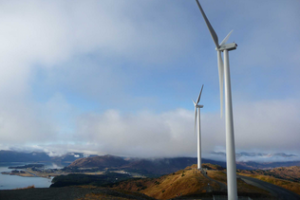By Stephanie Nowers
Last November, Facebook made headlines when it announced plans to build a $760 million internet server farm in Lulea, Sweden. The cold climate was a factor since all those machines need to be kept cool. But access to long-term, stably priced energy from hydropower was critical. Server farms use a huge amount of energy – as much worldwide as some small countries – and knowing that its cost for energy would stay stable for the long-term played a major role in the social media giant’s decision.
In Alaska we are home to vast supplies of energy, yet we have communities that pay some of the highest energy prices in the country. In some rural villages, residents pay more than five times the national average for electricity. Some of the poorest Alaskan households are spending nearly half their income on energy, according to the recent report by Commonwealth North, ‘Energy for a Sustainable Future.’
Even in our urban areas, we face an uncertain energy future. In Anchorage, for example, we rely on natural gas for more than 90% of our electricity and more than 50% of our heating needs. Although there have been some encouraging recent drilling reports in Cook Inlet, the Anchorage utilities have been looking at having to import natural gas as early as 2014 because of a shortfall in supply. This uncertainty is damaging to our communities and to Alaska’s long-term economic potential.
It’s difficult to attract businesses with so much uncertainty about the cost of energy. Diversifying our energy portfolio to include more local, stable priced renewable energy sources is a way to stabilize prices and become more attractive to business.
Unlike diesel or natural gas, the fuel cost for renewable energy sources like wind, geothermal and solar is free. People worldwide from insurance companies to the military have recognized this advantage. In fact, the U.S. military, one of the biggest energy users in the world, is aggressively pursuing renewable energy strategies because it has identified reliance on volatile-priced fossil fuels as a strategic security risk.
The good news is many people and companies are already working on diversifying our energy supply. Nationwide, hydropower supplies 7% of the country’s electricity. Wind power now generates 3% of the nation’s electricity and in states like Iowa supplies more than 15%. Solar is also growing as is geothermal and biomass, and ongoing research and testing of new battery storage, smart grids, and other technologies is only going to improve the reliability and efficiency of these systems.
In Alaska, we’re making headway too, a fact that will be highlighted at the April 19-20 Business of Clean Energy in Alaska Conference in Anchorage. Hydropower already supplies 21% percent of our electricity statewide. In addition, more than 20 communities are partially powered by wind, including Kodiak, which is now 89% renewably powered with wind and hydro. Kodiak Electric Association reports it has saved a net of $3.6 million in just over two years by generating electricity with wind power instead of buying and burning expensive diesel fuel.
In Anchorage, several developments are on the horizon or already online. By the end of the year, the new 17.6 megawatt (MW) Fire Island wind farm is scheduled to be online, as is the 5.6MW landfill methane plant where the city of Anchorage is using methane from our garbage to power Fort Richardson.
The city is also home to a large biodiesel plant. AK Waste in Midtown Anchorage has been churning out 15,000 gallons a month of biodiesel made from cooking oil recycled from local restaurants. The company uses the biodiesel fuel to power its fleet of refuse trucks.
All these local, sustainable sources of energy help diversify our fuel stream, stabilize energy prices and create economic development. There’s no doubt developing and implementing these technologies will take time and there will be a learning curve. But these are steps in the right direction to create a long-term, sustainable energy future for our state.
Stephanie Nowers is Communications Director of Renewable Energy Alaska Project (REAP), an Alaska-based non profit education and advocacy group and host of the annual Business of Clean Energy in Alaska Conference.
Formed in 2004, REAP is a non-profit education and advocacy group that includes a diverse coalition of urban and rural Alaska electric utilities, businesses, conservation organizations, consumer groups, Alaska Native organizations, and municipal, state and federal entities that all share the goal of developing Alaska’s vast renewable energy resources.
REAP believes that, for economic and environmental reasons, Alaska, the United States and the planet will benefit greatly from the rapid development of renewable energy resources and that Alaska can and should be a leader in such development. REAP promotes renewable energy development and policies that encourage energy efficiency.




